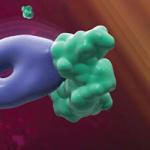
Robert Innis, M.D., Ph.D.
Senior Investigator
Section on PET Neuroimaging Sciences, Molecular Imaging Branch (MIB)
NIMH
Research Topics
Working in close collaboration with the radiochemistry laboratory of Dr. Victor Pike, my laboratory uses in vivo imaging to evaluate novel positron emission tomography (PET) radioligands, first in animals, then in healthy human participants, and finally in patients. The crux of our work is to develop novel and truly useful radioligands with broad scientific utility. Towards this end, we have developed novel radioligands for more than 15 targets that are now used at centers throughout the world; these novel ligands are either measurably better than ligands previously in use or, often, are the first to successfully image a particular target. Targets include: translocator protein (TSPO), cyclooxygenase-1 (COX-1), COX-2, phosphodiesterase-4B (PDE4B), PDE4D, metabotropic glutamate receptor 1 (mGluR1), mGluR5, cannabinoid receptor type 1 (CB1), serotonin 1A receptor (5-HT1A), the nociceptin-orphanin peptide (NOP) receptor, OGlcNAcase (an enzyme involved in tau protein clearance from brain), and GluN2B, among others. My laboratory has multidisciplinary expertise in pharmacology, animal experimentation, clinical neuroscience, digital image analysis, and human evaluation of investigational radiopharmaceuticals. In addition to traditional receptor targets, we use radiolabeled probes for in vivo imaging of neuroinflammation and intracellular signal transduction.
Currently, our active areas of research include: 1) studying neuroinflammation, which has been implicated in the pathophysiology of several mental disorders, with a particular focus on the COX system as well as TSPO; 2) investigating PDE4B—and, by extension, cyclic adenosine monophosphate (cAMP) signaling—with our newly developed radioligand to determine whether it is downregulated in depression; 3) developing radioligands to localize and quantify transfected genes activated by exogenously administered drugs in two systems: Designer Receptors Exclusively Activated by Designer Drugs (DREADDs) and Pharmacologically Selective Actuator Molecules (PSAMs); and 4) spearheading efforts to establish an archive to meaningfully share and combine primary PET data (the OpenNeuroPET Archive). A major goal of the lab is to use newly developed radioligands to facilitate clinical trials of novel therapeutics, and several such trials are currently ongoing.
Biography
EDUCATION:
B.S., Yale College, 1974, Molec. Biophysics & Biochemistry (1970 - 1974)
M.D., Johns Hopkins School of Medicine, 1978 (1974 - 1978)
Ph.D., Pharmacology, Johns Hopkins School of Medicine, 1981 (1976 - 1980)
Nuclear Medicine, six-month training for Authorized User (10 CFR 35) of radiopharmaceuticals in human subjects (1995)
CAREER:
1980-1984 Resident in Psychiatry, Yale University
1984-1990 Assistant Professor, Dept. Psychiatry, Yale University
1990-1994 Associate Professor, Yale Dept. Psychiatry
1994-2001 Appointment with tenure, Yale University
1996-2001 Professor of Psychiatry and Pharmacology, Yale University
2001-present Chief, Molecular Imaging Branch, NIMH
Selected Publications
- Shrestha S, Kim MJ, Eldridge M, Lehmann ML, Frankland M, Liow JS, Yu ZX, Cortes-Salva M, Telu S, Henter ID, Gallagher E, Lee JH, Fredericks JM, Poffenberger C, Tye G, Ruiz-Perdomo Y, Anaya FJ, Montero Santamaria JA, Gladding RL, Zoghbi SS, Fujita M, Katz JD, Pike VW, Innis RB. PET measurement of cyclooxygenase-2 using a novel radioligand: upregulation in primate neuroinflammation and first-in-human study. J Neuroinflammation. 2020;17(1):140.
- Lu S, Haskali MB, Ruley KM, Dreyfus NJ, DuBois SL, Paul S, Liow JS, Morse CL, Kowalski A, Gladding RL, Gilmore J, Mogg AJ, Morin SM, Lindsay-Scott PJ, Ruble JC, Kant NA, Shcherbinin S, Barth VN, Johnson MP, Cuadrado M, Jambrina E, Mannes AJ, Nuthall HN, Zoghbi SS, Jesudason CD, Innis RB, Pike VW. PET ligands [18F]LSN3316612 and [11C]LSN3316612 quantify O-linked-β-N-acetyl-glucosamine hydrolase in the brain. Sci Transl Med. 2020;12(543).
- Kim MJ, Shrestha SS, Cortes M, Singh P, Morse C, Liow JS, Gladding RL, Brouwer C, Henry K, Gallagher E, Tye GL, Zoghbi SS, Fujita M, Pike VW, Innis RB. Evaluation of Two Potent and Selective PET Radioligands to Image COX-1 and COX-2 in Rhesus Monkeys. J Nucl Med. 2018;59(12):1907-1912.
- Fujita M, Richards EM, Niciu MJ, Ionescu DF, Zoghbi SS, Hong J, Telu S, Hines CS, Pike VW, Zarate CA, Innis RB. cAMP signaling in brain is decreased in unmedicated depressed patients and increased by treatment with a selective serotonin reuptake inhibitor. Mol Psychiatry. 2017;22(5):754-759.
- Kreisl WC, Lyoo CH, Liow JS, Wei M, Snow J, Page E, Jenko KJ, Morse CL, Zoghbi SS, Pike VW, Turner RS, Innis RB. (11)C-PBR28 binding to translocator protein increases with progression of Alzheimer's disease. Neurobiol Aging. 2016;44:53-61.
Related Scientific Focus Areas
This page was last updated on Tuesday, January 30, 2024


